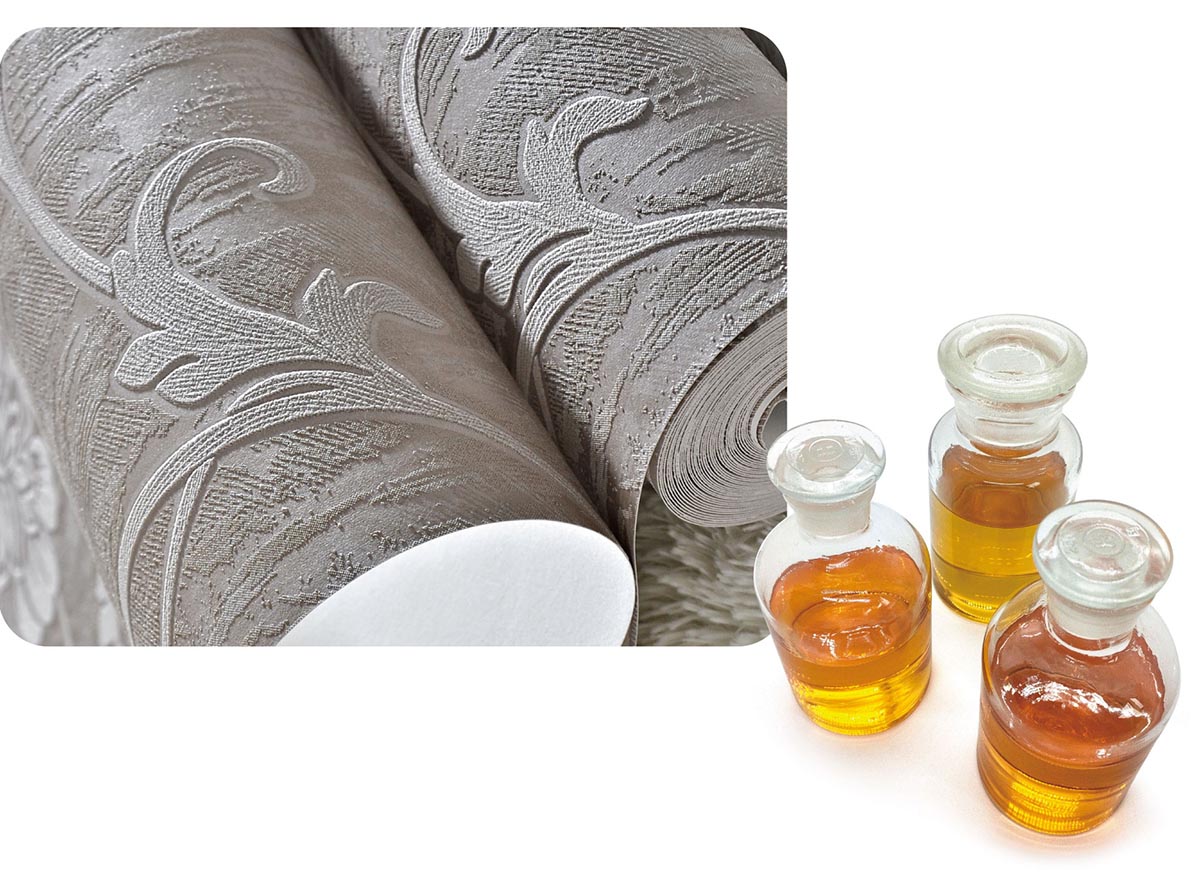In the intricate world of interior design and construction materials, foamed wallpaper has carved a niche for its unique texture, sound insulation, and aesthetic versatility. At the heart of its exceptional performance lies an often-overlooked yet indispensable component: liquid stabilizers. These specialized additives serve as the linchpin in ensuring foamed wallpaper’s durability, processability, and environmental compatibility. Let’s explore the pivotal functions that render liquid PVC heat stabilizer essential in the production and application of foamed wallpaper.
1. Thermal Stability: Protecting Against Heat-induced Deformation
Foamed wallpaper production involves high-temperature processes, such as extrusion and calendaring, which can reach temperatures of up to 200°C. During these operations, the polymer matrix of the wallpaper is vulnerable to thermal degradation, leading to issues like surface blistering, color distortion, and structural weakening. Liquid stabilizers act as thermal sentinels, intercepting free radicals generated by heat exposure. Research from the Wallcovering Manufacturers Association indicates that without proper stabilizers, foamed wallpaper samples experience a 40% decrease in tensile strength after just 15 minutes at 180°C. In contrast, wallpaper with optimized liquid stabilizer formulations retains over 85% of its original strength, ensuring that the material maintains its shape and integrity during installation and long-term use, even in areas with high temperature fluctuations, like kitchens or sunlit rooms.
2. Foam Structure Preservation: Enhancing Cell Uniformity and Stability
The distinctive texture and lightweight nature of foamed wallpaper rely on a well-structured cellular foam. Liquid stabilizers play a crucial role in controlling the foaming process, ensuring the formation of uniform, closed-cell structures. By regulating the nucleation and growth of gas bubbles, these additives prevent issues such as cell collapse, coalescence, or uneven distribution. For instance, in a comparative study on PVC-based foamed wallpaper, samples with liquid stabilizers exhibited a 30% increase in cell density and a 25% reduction in cell size variation compared to those without. This results in a more consistent surface texture, improved insulation properties, and enhanced mechanical strength, making the wallpaper more resistant to impacts and wear.
 The wallpaper industry is on the cusp of a technological revolution, with liquid stabilizers at the forefront of innovation. Researchers are exploring multifunctional stabilizer formulations that combine traditional stabilizing properties with additional benefits, such as antimicrobial activity, self-cleaning capabilities, or enhanced UV resistance. These advancements not only improve the performance and longevity of foamed wallpaper but also open up new possibilities for interior design applications. Additionally, the development of smart stabilizers that can respond to environmental stimuli, like temperature or humidity changes, holds the promise of creating adaptive wallpaper materials that can dynamically adjust their properties to meet the needs of different spaces.
The wallpaper industry is on the cusp of a technological revolution, with liquid stabilizers at the forefront of innovation. Researchers are exploring multifunctional stabilizer formulations that combine traditional stabilizing properties with additional benefits, such as antimicrobial activity, self-cleaning capabilities, or enhanced UV resistance. These advancements not only improve the performance and longevity of foamed wallpaper but also open up new possibilities for interior design applications. Additionally, the development of smart stabilizers that can respond to environmental stimuli, like temperature or humidity changes, holds the promise of creating adaptive wallpaper materials that can dynamically adjust their properties to meet the needs of different spaces.
In conclusion, liquid stabilizers are far more than just additives; they are the key enablers of foamed wallpaper’s superior performance, reliability, and sustainability. As the demand for high-quality, environmentally friendly interior design materials continues to rise, the role of liquid stabilizers will only become more critical, driving innovation and shaping the future of the wallpaper industry.
Post time: Jul-07-2025

